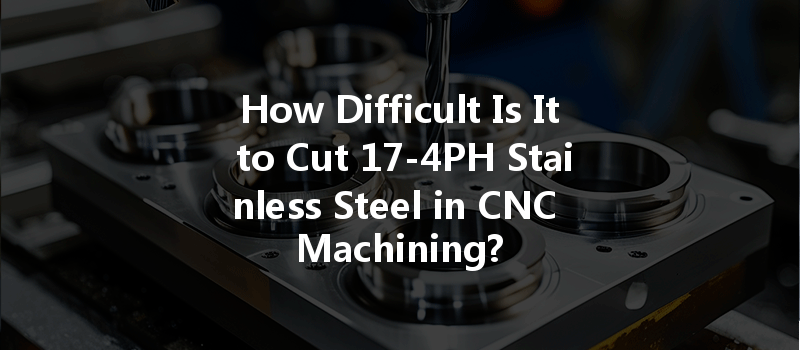Did you know that 17-4PH stainless steel is often referred to as one of the most popular steels used in applications requiring corrosion resistance and high strength? This material is not only widely used in the aerospace industry but also in marine and chemical processing environments. However, machining this alloy can present unique challenges that require specialized techniques and insights. In this blog, we will dive deep into the intricacies involved in CNC machining of 17-4PH stainless steel, examining its properties, the challenges faced during machining, and the best practices to effectively overcome these hurdles.
Understanding 17-4PH Stainless Steel
17-4PH stainless steel is a precipitation-hardening martensitic steel, containing chromium, nickel, and copper. Its unique composition grants it notable properties, including:
These attributes make 17-4PH an essential material in the manufacturing of high-performance components, particularly in industries such as aerospace and medical devices.
The characteristics of 17-4PH stainless steel include:
Challenges of CNC Machining 17-4PH Stainless Steel
While 17-4PH offers tremendous advantages, it is not without its machining challenges:
The hardness of 17-4PH can lead to rapid tool wear, affecting precision and machining efficiency. Traditional cutting tools may dull swiftly when faced with this material, requiring newer materials such as carbide or ceramic tools specifically designed for high-stress applications.
During machining, high friction can generate excessive heat, which may lead to thermal deformation and steel hardening at the cutting edge. This heat can alter the physical properties of the material, leading to difficulties in maintaining dimensional accuracy.
When cutting hard materials like 17-4PH, chip formation and removal can become problematic. Build-up of chips can block cutting areas, affecting the fluid packaging and leading to increased chatter and vibration during machining.
The dynamic characteristics of CNC machinery cutting 17-4PH necessitate precise tuning of feed rates, spindle speeds, and depth of cut to ensure stability and consistency.
Strategies for Effective CNC Machining of 17-4PH Stainless Steel
Choosing the right cutting tool is critical. Carbide tools are often recommended due to better wear resistance and the ability to withstand higher temperatures. Coated tools can further enhance performance by reducing friction.
Proper geometry and design features—such as rake angles and relief angles—are essential for efficient cutting. A positive rake angle can help reduce cutting forces and improve chip flow.
Optimizing cutting parameters is crucial for successfully machining 17-4PH:

Utilizing the right coolant can significantly improve machining efficiency. Coolants play dual roles in cooling and lubricating the cutting zone:
Continual monitoring of temperature, vibration, and cutting forces using sensors and measurement tools can significantly enhance machining reliability and accuracy, enabling timely adjustments to prevent tool failure.
Transitioning Through the Machining Process
Prior to machining, ensure the material is properly heat-treated or in a condition that will enhance machinability. It’s advisable to maintain a level of ductility that allows for easier machining.
Configuring the CNC setup is crucial. Verify the machine’s operational capabilities, ensuring it can handle the pressures required by 17-4PH.
Always conduct a test pass on scrap material to assess all settings, including cutting speed, feed rate, and tool path. This will allow for observation of cuts and adjustments before commencing on final parts.
Utilize progressive steps, gradually moving towards achieving the final shape. This technique allows for fine adjustments at each stage and ensures issues are caught before they escalate.
After Machining: Post-Processing Considerations
After machining, employ precise inspection methods to verify the dimensions and tolerances of the final product. Common methods include:
Implement post-machining surface treatments to enhance corrosion resistance and surface quality. Techniques could include passivation or electropolishing, which can create a smoother surface ideal for high-performance applications.
In summary, machining 17-4PH stainless steel poses various challenges but is certainly achievable with the right techniques and tools. By selecting appropriate cutting tools, optimizing machining parameters, and implementing effective cooling strategies, manufacturers can overcome the natural hurdles associated with this popular alloy.
This blog has covered a comprehensive guide to understanding and tackling the complexities of CNC machining 17-4PH stainless steel. By adopting these core techniques, businesses can enhance their production capabilities and ensure that they meet the stringent demands of high-performance industries. Remember, as competition increases in machining—especially for alloys like 17-4PH—staying informed on industry trends and best practices will empower you to maintain quality and efficiency, ultimately ensuring the long-term success of your operations. Keeping these insights in your toolkit could be the difference between a good machining process and an extraordinary one.






